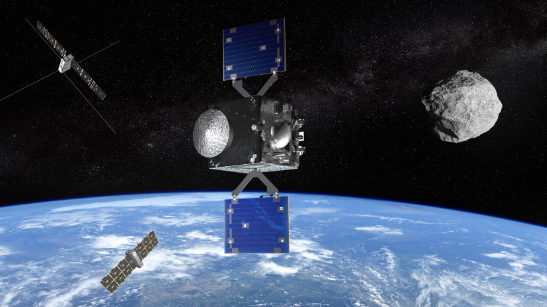ESA Prepares RAMSES Mission to Study Asteroid Apophis
The Shoemaker-Levy 9 comet broke up and hit Jupiter in 1994, which sparked a lot of interest in protecting planets. People talked about how to stop similar events from happening on Earth after this one. Planetary defense systems are getting a lot of attention around the world because asteroids could hit Earth. Space Safety is an ESA program that works to lower these risks through its future flights.
Introduction of Ramses
ESA has started getting ready for Ramses, the Rapid Apophis Mission for Space Safety. The goal of Ramses is to study asteroid 99942 Apophis when it comes close to Earth in 2029. Apophis, which is about 375 meters across, will pass within 32,000 km of Earth on April 13, 2029, and billions of people will be able to see it. This event is very rare; it only happens about once every 5,000 to 10,000 years. It won’t be a crash threat for at least 100 years.
Scientific Goals of the Ramses Mission
During its flyby, the Ramses spaceship will see how Earth’s gravity affects Apophis. This includes looking at how the asteroid’s shape, rotation, and surface features change over time. This will help us learn more about these qualities, which will be important for future defense plans. NASA’s OSIRIS-REx spacecraft will also go after Apophis, which will help experts figure out what changes happened after the flyby. This two-pronged method lets us fully compare the asteroid’s state before and after. Ramses is a good example of how to quickly send out reconnaissance missions to keep an eye on possibly dangerous asteroids. Accurate data will help with tactics for deflecting asteroids and avoiding impacts.
About ESA
- Foundation and Member States: The European Space Agency (ESA) was founded in 1975 and currently comprises 22 member states. It is a major intergovernmental organization dedicated to the exploration of space, coordinating and promoting European space activities and research.
- Mission Scope and Collaborations: ESA operates a variety of missions, including Earth observation, planetary science, and human spaceflight. Notably, its Earth Observation program includes the Copernicus initiative, which provides vital data for environmental monitoring and climate change. ESA also collaborates with NASA on significant missions such as the Mars Sample Return mission, showcasing its role in international space exploration efforts.
Month: Current Affairs - July, 2024
Category: Science & Technology Current Affairs








